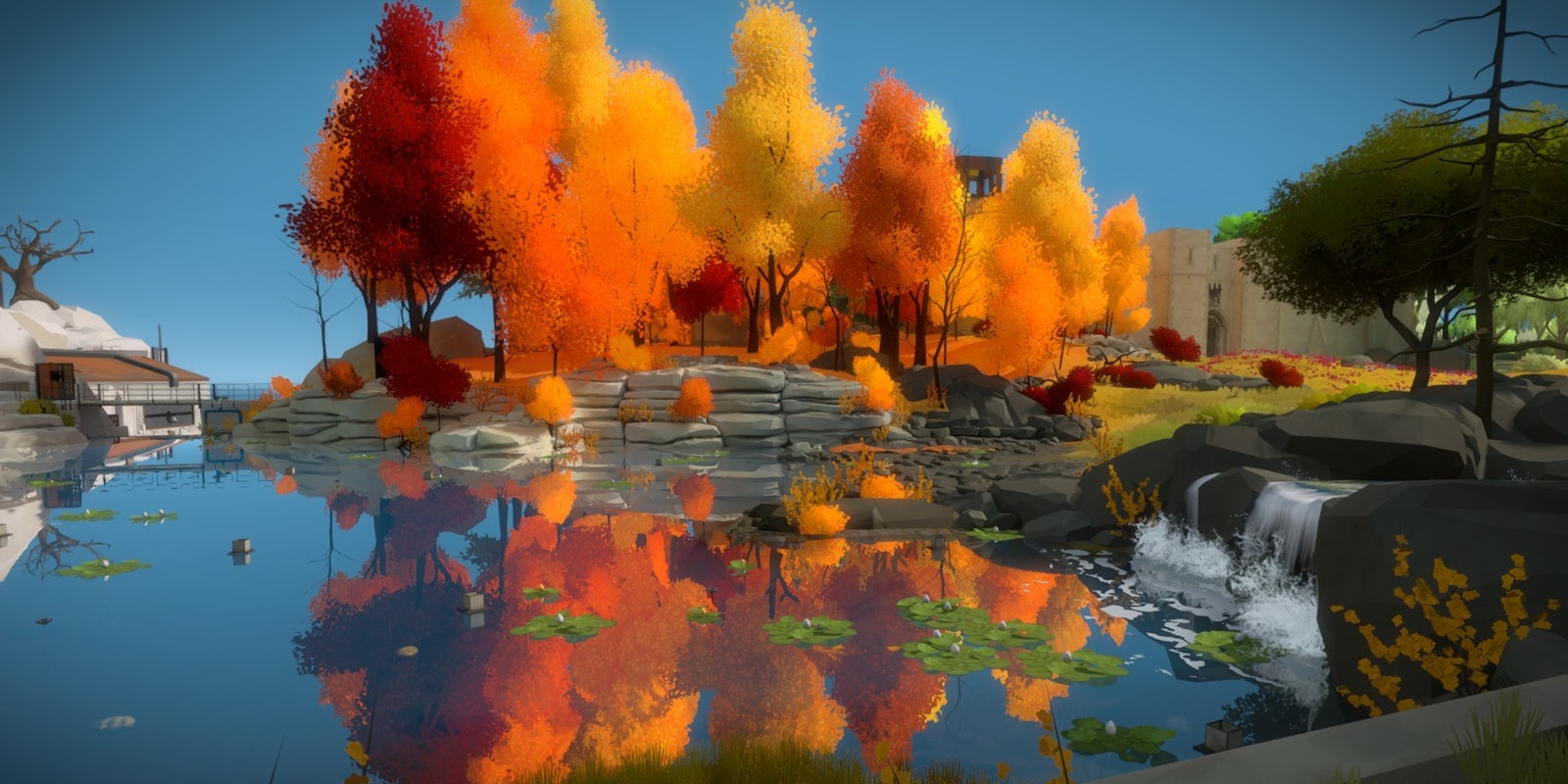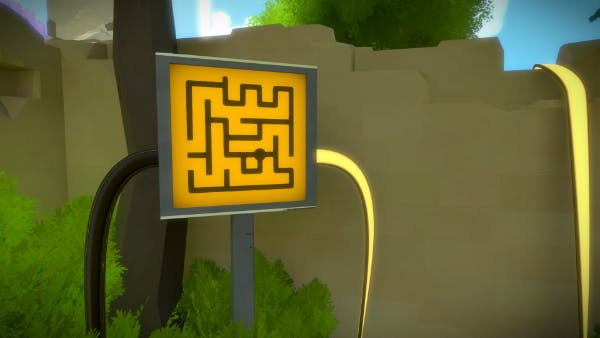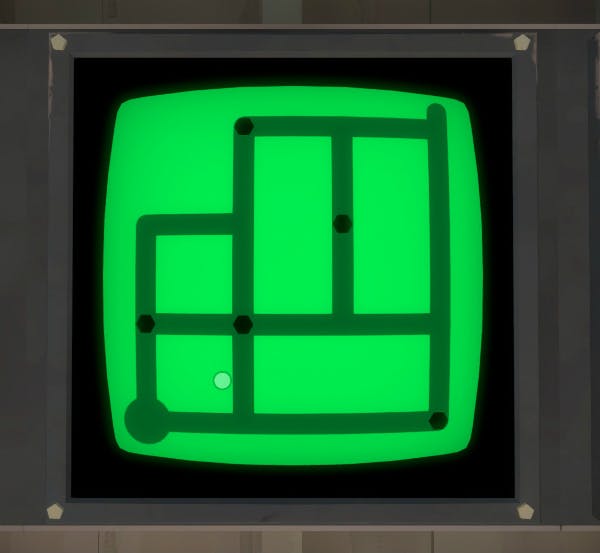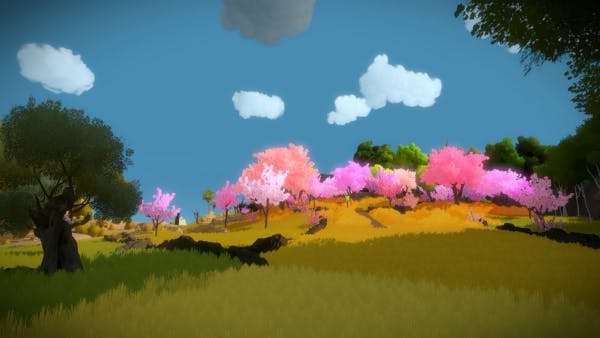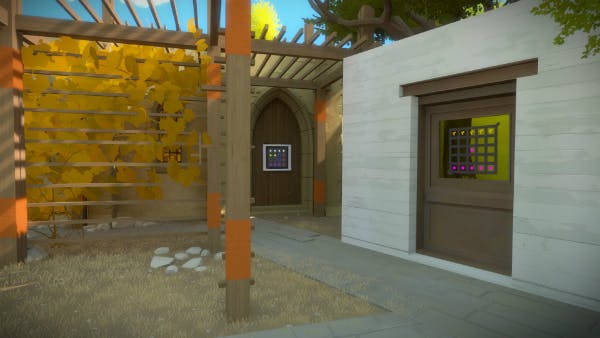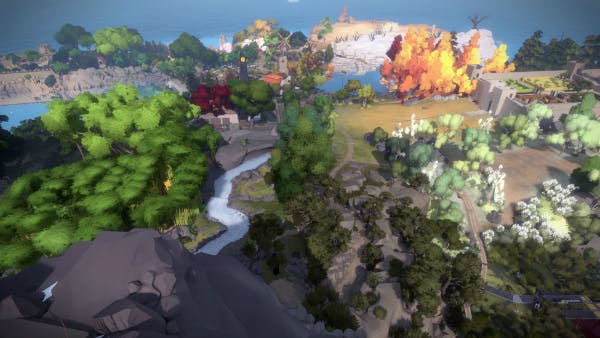For seven years, Jonathan Blow has been celebrated in the indie game world for the success of his puzzle game, Braid. And in just a week, Blow’s reputation will be tested.
The explosion of Braid’s popularity on Xbox Live Arcade, Microsoft’s marketplace for indie games, in 2008 presaged the current trend of highlighting the work of indie developers and their growing influence in the modern game development scene.
Blow was one of three subjects of the documentary film Indie Game: The Movie, which proselytizes indie game development as a deeply personal medium that demonstrates the value of video games as a whole.
To a point, Blow courts the attention with his blunt, frequent assessments of the shortcomings of mainstream, big-budget game development. He is a partner in Indie Fund, a collaboration between successful indie developers to help promote the financial independence of up-and-coming indies. If Blow makes an effort to get out from under his position as a de facto spokesperson for the indie community, it goes undetected.
But the video game media also foisted this role upon him, by anointing Blow an ambassador for the indie world whether he liked it or not. The weight on Blow’s shoulders is tremendous. And it is in the context of this role that his newest game, The Witness, will be viewed when it is released for PC and PlayStation 4 on Jan. 26.
Blow has spent the millions of dollars he made off Braid’s success to fund the seven-year development effort for The Witness, an homage to the classic puzzle game Myst. The player is deposited onto a beautiful island filled with a stunning diversity of environments.
Placed around the island are hundreds of “panels,” touchscreens that present the player with a maze. The player is shown where to place their finger to begin tracing a line, and where the line must be traced to.
The concept is as simple as the mazes children are given on the back of restaurant menus. Blow, however, turns these mazes into virtual labyrinths, over 500 of which are spread across the island. Some of them are punishingly difficult.
The simplest puzzles may ask the player to touch certain elements within the maze before completing the line from beginning to end. Some puzzles require careful observation of the environment in which they are placed in order to suss out the solution.
We’ve been spending time on the island in a preview copy of the game for the past week, and there are still some puzzles that have us dumbfounded.
We spoke with Blow about designing a puzzle game in a world where online solutions are a click away, how he accounts for all the different ways his players learn and how that affects the way they will process his puzzles, and why a diversity of environments on the island are so important to The Witness.
Do you worry about how quickly and easily players can jump on YouTube, watch some Let’s Play videos, and find the solutions to puzzles in games, when you’re designing a game like The Witness?
Well, it’s something I’ve thought about, for sure. I don’t think there’s anything you can do about it though, right? That’s just the world that we live in, now.
So, Braid, actually, my last game, I did something really funny, which was I wanted to avoid this to the greatest extent possible, so before the game came out I seeded a search engine’s fake walkthrough page. This is before the game walkthroughs on YouTube.
I put up a fake page that looked like a walkthrough that would tell you the answers to everything, and it said, “OK, now turn the page,” and you turned the page and it would give you a rant about how you shouldn’t look up the answers. A lot of people thought that was funny, but some people were upset by it, I think.
But anyway, for The Witness we’re not doing anything like that. It’s very deliberately a game where typing in the answer or inputting the answer to anything will not bring you any enjoyment. It becomes kind of pointless, even more so than it is for a lot of games.
If you play some action game, and it’s got a puzzle in the middle, then you might be in a weird situation where it’s like, “I just want to finish this game, and there’s this puzzle in the way, and I don’t really like the puzzle,” or something, and people might look up an answer in that case.
But in this case, if you look up answers to stuff you literally get nothing out of it. It would be a very joyless experience. I’m hoping people just don’t do it. But we’ll see.
What if it was just, to riff off the idea that if people look up solutions they might not get enjoyment out of it, what if someone is on the sixth panel of a puzzle, and they’re just not getting it. If you look up just that solution, that could also lead to some enjoyment, right?
Again, I don’t totally recommend it because the game is structured to allow getting stuck. Getting stuck is OK, because you can go off and explore something else and come back. So I’ve made every allowance for that.
And in fact, all the people who’ve played the game on and off for like two years, they all solve everything. And there is no Internet resource for them to go to right now.
So, that kind of a design works and I just hope that people really give themselves credit for being smart enough to figure it out and have a little patience, maybe. I have no doubt that some people are gonna do exactly what you’re saying, but I just hope it’s a minority.
How would you guess players are going to digest The Witness? They’re going to sit down and, beginning to end, finish and then move on to the next game? Or they’ll take long sessions with a week in-between, or plunk away at it for years. Do you have any concept of that?
I think that’s up to the individual, really? I don’t necessarily have a prescription for that. I mean, it’s a long game. If you do everything in this game it might be 80 to a hundred hours. There’s a ton of stuff.
Life naturally intervenes at points. And everyone’s life is different so life is gonna intervene to different degrees. If people are interested enough in the game to just sort of have it around for several years and plink away at it now and again, that’s really a compliment. Most games, people don’t pay nearly that much attention to, right?
Though I would say with this kind of thing, I think there is a sweet spot. If you’re stuck on stuff, or you’re tired or you’re just not getting it, like, taking a break is good, you know? Whether that’s going to sleep, or getting lunch, or taking a couple days off and going to the beach, or playing a different game, I think that’s very healthy for figuring things out, because often after that break, you come back and you immediately know the answer to something.
I have that experience all the time and a lot of our playtesters have had that same experience very often. So giving that a chance to happen is good. But I think too long of a break makes things a little harder? Because some of the ideas in the game have relatively subtle nuances to how they work. If you play for a day and then come back three weeks later, you might not remember a lot of that stuff very freshly. And you might be able to rediscover it. I don’t know.
When you were designing these puzzles, did you account for the theory that different people learn in different ways?
I had a completely opposite way of going about it. You learn stuff about what the rules of the game are, and from that standpoint the game teaches stuff. But I didn’t, in the large, approach it as, “I’m gonna go teach the player a bunch of things.”
In the small I did, right? So, what if you come to a certain area, and know what the idea for the area is. I know where the good puzzles in the area are supposed to be, and I need to go toward a ramp-up of other good puzzles that are very simple and easy to figure out and that lead you into the complex ones.
At that time I think about how to teach the idea, but in the large, when I’m sitting there to design the game as a whole, and what all the different ideas are of the game, it’s not a teaching exercise. It’s the opposite.
It feels like that would be a major challenge for a puzzle designer, especially when they get into puzzles of some complexity, whether or not the player has to share a certain perspective or style of learning with the designer in order to have the greatest chance of solving the puzzles.
Do you ever have concerns about whether the largest portion of players will be able to share in this experience that you want to share with them?
Oh, absolutely. And I do my best to make the game approachable by everybody. I always think about that. But then I also don’t want to sacrifice the quality or depth of any ideas in the game in order to appeal to more people.
Sometimes I do things and they seem pretty obscure, and I’m like, “Oh, not many people are going to get this,” and in some cases if it’s not a very good idea in the first place, it’s like “We’re just going to cut that, because it’s not that good, and it’s not going to work for most people.”
But if the idea is good, what you really want as a designer is other ways of incorporating that into the game where it’s not a requirement for everybody, but the people who get it can get it, and the people who don’t need to get it or don’t like it don’t have to.
The way the game is structured is there’s a tremendous amount of optional stuff. To actually win the game there’s a certain amount of things that you need to do, but only a very small portion of it is required. There’s all these different areas you can explore, and you need a certain number of them solved, but no specific one of those areas have to be solved. Seven of them out of 11 have to be, and you can pick.
One of the things I’ve been struck by most about the game is the number of different biomes that you’ve managed to make coexist within this topography. Swamps, jungles, several different types of desert, several different types of forest.
The game is a very conscious callback to games like Myst that came out in the ’90s. The Myst island is way smaller than the island in The Witness, but it has that same thing where there’s different sectors on the island, and there’s an interesting feel to it. I wanted to make a modern version of that. It was part of the mission statement going in, we want to have all these different biomes.
The other reason that’s important is to make the game more playable when you have these puzzles in the open world. First of all, it helps you not get so lost, right? If we had just a bunch of trees that all look the same, then if you’re somewhere on the island you might be very confused about where you are.
Whereas if the trees radically change color, it helps you keep oriented as you look around. The other thing it does is it helps quarantine puzzle ideas. A natural thing when you’re stuck is you have all these ideas in your head about what the hint might be that helps you go further. Where do you look for that, right? If the game didn’t impose any hints about where to look for that…
Imagine the game was just a flat plain of like a desert texture and just all these panels on it. You might feel like you had to look everywhere in the whole map for the clue, right? Whereas in the current design of the game, it’s so compartmentalized in these different areas, you hopefully get the feeling like, “Oh, you know, if I’m leaving this red tree area, I kind of feel like anything outside here is not relevant,” right?
Or, “If I’m inside this walled castle and I’m stuck, by the time I get outside the walled castle I’m really in a different place, and there’s probably nothing relevant out there.” I think that that helps greatly in terms of helping people focus on what matters, when they might otherwise be stuck.
Illustration via The Witness

